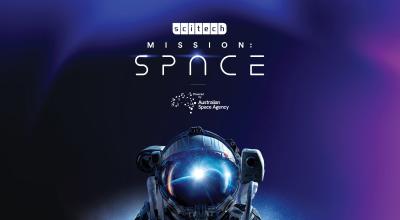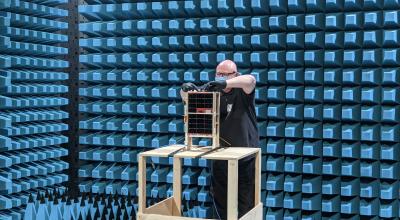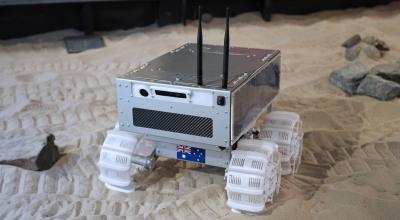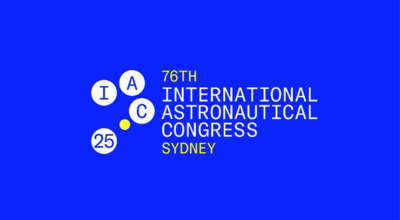The Memorandum of Understanding between the Australian Space Agency and the Northern Territory Government focuses on creating high-tech local jobs and new technologies, as well as highlights the opportunities to engage with international regions to strengthen partnerships and explore further space capabilities.
L-R: Head of the Australian Space Agency, Dr Megan Clark AC, NT Chief Minister, Michael Gunner
Read the full statement
The Commonwealth of Australia as represented by the Australian Space Agency part of the Department of Industry, Science, Energy and Resources (‘the Agency’); and The Northern Territory of Australia care of its agency the Department of Trade, Business and Innovation, (‘the Territory’); Hereinafter referred to individually as ‘Participant’ or collectively as ‘Participants’,
DESIRE TO BUILD on the co-operation already established between the Participants;
RECOGNISING the wishes of the Participants to mutually grow the size, scope, capability and commercial sustainability of Australia’s national space sector;
CONSIDERING the positive contribution that cooperation in supporting the development of infrastructure, science, research, technology, services and applications will bring to all industry organisations as well as academic and research institutions across the space sector;
REFLECTING that the Australian Civil Space Strategy 2019-2028 is a framework for the development and growth of the Australian space industry over ten years; underpinned by four strategic pillars: International; National; Responsible; and Inspire. Under these pillars the strategy endeavours to help realise opportunities and address challenges by opening doors internationally; increasing national space capability; promoting responsible regulation, risk and space culture; and building the future workforce. The Strategy sets a path for the Agency to triple the size of Australia’s space sector to $12 billion and create another 20,000 jobs by 2030;
RECOGNISING that the Agency’s purpose is to transform and grow a globally respected Australian space industry that lifts the broader economy, inspires and improves the lives of Australians – underpinned by strong international and national engagement;
RECALLING that the Agency has seven National Civil Space Priority Areas including communications technologies and services; position, navigation and timing infrastructure; space situational awareness and debris monitoring; leapfrog research and development; Earth observation services; robotics and automation on Earth and in space; and access to space;
RECALLING that the Agency is responsible for whole-of-government coordination of civil space matters and is the primary source of advice to the Australian Government on civil space policy including: providing national policy and strategic advice on the civil space sector; coordinating Australia’s domestic civil space sector activities; supporting the growth of Australia’s space industry and the use of space across the broader economy; leading international civil space engagement; administering space activities legislation and delivering on our international obligations; and inspiring the Australian community and the next generation of space entrepreneurs;
RECOGNISING the Participants’ commitment to work collaboratively with industry to support the growth and development of the civil space sector in Australia and support the Team Australia approach;
RECOGNISING that space will be an enabler to achieve a more prosperous Northern economy and that Northern Australia may require greater investment in economic enabling infrastructure than more developed parts of Australia, as outlined in the White Paper on Developing Northern Australia;
RECOGNISING the Territory’s existing international engagement networks to facilitate the growth of the space sector in the Indo-Pacific region and the opportunities to jointly engage with nations to build complementary space industry capabilities;
RECOGNISING the Territory’s advantages in areas such as:
- launch due to its geographic location, emerging facilities (such as the Arnhem Space Centre) and well progressed private sector investment
- stratospheric balloon launch, repair, refurbishment and manufacturing due to existing infrastructure (such as the Alice Springs Balloon Launching Facility), international partnerships and favourable weather conditions
- ground stations due to available land that is radio quiet and has low light pollution; and
- space technology development and testing due to available land and demonstrated capacity to host niche high-tech strategic operations
RECOGNISING the Territory is working to encourage civil space partnerships and engagement with research and broader industry to build economic value for the Territory and Australia. Territory organisations are well progressed in developing commercial launch facilities and are already applying space capabilities into broader areas of the economy such as the Positioning, Navigation and Timing applications in the maritime and agribusiness sectors; Earth Observation applications such as rangeland mapping and bushfire monitoring services, and Advanced Manufacturing;
RECOGNISING the Territory’s existing civil space enabling infrastructure, for example the Alice Springs Centre for Appropriate Technology facility; Geoscience Australia and Bureau of Meteorology operations; and that the Territory has a continuing history in space including stratospheric balloon campaigns as demonstrated by the partnerships between the Commonwealth Scientific and Industrial Research Organisation (CSIRO) and the Japanese Space Agency, JAXA, the US Space Agency, NASA and the French Space Agency, CNES;
RECOGNISING the Territory’s existing space-related applications in oil, gas, agriculture, bushfire management, and marine surveillance; and international collaborative research and development to support the broader economy.
The participants have reached the following understandings
1. Purpose
1.1 The purpose of this Memorandum of Understanding (‘MOU’) is to:
- provide a framework for mutual understanding between the Participants regarding common areas of interest and reviewing major areas of future cooperation to develop the space industry;
- facilitate the interchange of information in areas of mutual interest;
- nominate relevant points of contact for both Participants.
2. Status of this MOU
2.1 The Participants agree that this MOU is not intended to create any binding legal partnership between the Participants, nor are its provisions intended to give rise to legal rights, obligations or liabilities on the part of either Participant.
2.2 Nothing in this MOU creates or implies any obligation on the part of either Participant to enter into any contract, agreement, commitment or other arrangement whatsoever in relation to the subject matter of this MOU.
2.3 Nothing in this MOU requires a Participant to cooperate, facilitate or make any contribution concerning the matters the subject of this MOU in any way contrary to its own interests or requirements.
2.4 Nothing in this MOU implies preferential treatment of assessments undertaken by the Agency, or removal of obligations and processes under regulatory activities, such as under the Space (Launches and Returns) Act 2018.
3. Areas of Cooperation
3.1 Subject to the laws and regulations applicable to them, the Participants, through consultation, will decide upon the specific items and scope of cooperation within the framework of this MOU. The proposed collaborative activities are as follows:
- Supporting the development of several focused space sectors including, but not limited to:
- access to space and launch supply chains, including space launch facilities, such as the Arnhem Space Centre, and other upstream space industry activities
- high altitude pseudo satellite (HAPS) and stratospheric ballooning, including launch facilities and ballooning technology repair, refurbishment and manufacturing
- ground station operations and supply such as Alice Springs Centre for Appropriate Technology facility
- downstream space industries including earth observation, positioning, navigation and timing, data processing, advance manufacturing and technology services; and
- capabilities for developing and testing new space technologies
- Promoting the Territory’s space ecosystem and competitive advantages both nationally and internationally to facilitate growth of, and attract investment in, the Territory’s space sector
- Supporting the development of existing sectors of the Territory and Northern Australia economy to become ‘space enabled’, and further supporting Territory businesses and academia to participate in international space missions
- Supporting and promoting the use of national facilities based in the Territory for commercial and research based activities, such as the Alice Springs Ballooning Facility and the Geoscience Australia’s Alice Springs ground station and collaborating on initiatives that support the filling of national capability gaps
- Promoting Australian space activities to inspire students and the broader community to be interested in space and STEM studies; and supporting the development of the Territory’s space industry skills and workforce capability, to support growth, jobs and innovation
- Supporting the development of a regulatory environment that allows the Territory space sector to grow, while ensuring national safety and security which meets our international obligations and norms
- Leveraging the Participants’ international networks to explore space development opportunities in the Indo-Pacific region, and strengthening partnerships with international space agencies, including activities associated with NASA’s sounding rocket campaigns and NASA, CNES and JAXA’s use of the Alice Springs Ballooning Facility
- Other jointly identified suitable projects of common interest that can be supported and developed by both Participants. Other areas of cooperation may be identified by mutual consent of the Participants.
4. Implementation
4.1 The Participants will arrange meetings by mutual consent to review progress on this MOU. The persons nominated by the Participants as responsible for overseeing the implementation of this MOU are as follows:
or such other person notified to the other Participant.
4.2 The Participants acknowledge that the State and Territories Space Coordination Committee will be used as the forum to review the Agency’s and all States and Territories progress to supporting the growth of Australia’s national space capability.
5. Confidentiality
5.1 Subject to this clause 5, each Participant must keep confidential, and must not publish or disclose to a third party, without the written consent of the other Participant, any information and/or data relating to the operations, business, property or affairs of a Participant which is of a confidential nature (‘Confidential Information’).
Nothing in clause 5.1 prevents:
- a Minister from publishing or disclosing Confidential Information if that Minister is required to disclose that Confidential Information to Parliament in order to properly discharge that Minister’s duties or responsibilities as a Minister of the Crown or Commonwealth.
- a Participant from publishing or disclosing the Confidential Information of that Participant.
- a Participant from publishing or disclosing the Confidential Information of the other Participant to the extent that the publication or disclosure
- is required by law or lawful order of any Government Body having authority over a Participant
- is necessary to enable that Participant to enjoy the benefit of, or enforce obligations arising under, this MOU or
- is made on a confidential basis to the professional advisers of such Participant for the purpose of obtaining professional advice in relation to this MOU or otherwise for the purpose of consulting such professional advisers.
6. Duration and termination
6.1 This MOU will come into effect on the date of signature by both Participants and will continue in operation until termination by either Participant giving one months’ written notice to the other.
7. Miscellaneous
7.1 No partnership or agency
- Nothing contained or implied in this MOU will:
- constitute, or be taken to constitute, a Participant to be the partner, agent or legal representative of another Participant for any purpose
- create, or be taken to create, a partnership or joint venture or
- create, or be taken to create, an agency or trust.
- A Participant must not represent or hold itself out to be a partner, joint venturer, agent or representative of another Participant.
7.2 Amendment
- This MOU may only be amended or supplemented in writing signed by the Participants.
7.3 Disclosure
- Despite any confidentiality or intellectual property right subsisting in this MOU, a Participant may publish all or any part of this MOU without reference to another Participant.
- Nothing in this clause derogates from a Participant's obligations under the Information Act 2002 (NT) or the Privacy Act 1988 (Cwlth).
7.4 No interference with executive duties or powers
- Nothing in this MOU is intended to prevent, is to be taken to prevent, or prevents, the free exercise by the Administrator of the Northern Territory, by any member of the Northern Territory Cabinet and Executive Council, or by any Minister of the Crown, of any duties or authorities of his or her office.
Signed separately in two copies, in Canberra, Australia and Northern Territory, Australia on 23 July 2020.










